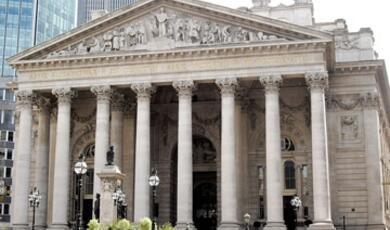Does Science Rob Nature of its Mystery and Beauty?
Share
- Details
- Text
- Audio
- Downloads
- Extra Reading
The core theme to be explored is how the natural sciences and Christian theology might offer an enriched or deepened vision of reality, which transcends the limits placed on each. John Ruskin (1819-1900) was one of the most acute observers of the tensions to emerge between science and religion during the Victorian age.
We shall explore Ruskin's concerns, set against the background of the Industrial Revolution, and ask how can we do science without losing sight of the beauty of nature? And in what ways might a religious reading of nature help meet at least some concerns?
Download Text
4 October 2016
Does Science Rob Nature of its Mystery and Beauty?
John Ruskin on Science, Religion,
and the Arts
Professor Alister McGrath
Good afternoon, ladies and gentlemen, and welcome to the first of six Gresham lectures which I will be giving during the academic year 2016-17. It’s a very great pleasure to be able to give these lectures in this new venue at the Museum of London, and I very much hope that this new arrangement will allow us to be able to stretch out a bit more and also to accommodate more people! And we also thank all of you who have written to me with kind comments about my lectures last year, which I very much appreciated. I’m very much hoping that this year’s lecture course will be much better, now that I got used to you as an audience, and have a better sense of the right level at which to pitch these lectures.
I do hope that you will enjoy what I have planned for you this year. As I mentioned to you right at the end of my last lecture in May, what I hope to do in this new lecture course is to open up six very interesting and important questions with an obvious religious or theological dimension, which also have much wider cultural and scientific relevance. Each case, I’m going to choose some interesting person to interact with, so that you get to hear other perspectives and voices, and not just mine. Of course, I will always tell you what I think, but my aspiration in these lectures is to help you think things through, and make up your own mind about these ideas, rather than impose my ideas upon you.
The six leading figures that I will be engaging with in this lecture course have been chosen because of their high profile, and the fact that they ask some very interesting questions, as well as giving us interesting and provocative and since. Some of the writers are hostile to religion, somewhat neutral, and some supportive – but all of them, I hope you will feel, are interesting. Today, we are going to engage John Ruskin, the famous Victorian art critic and cultural commentator, as he reflects on the question of how we can encourage the scientific investigation of nature without losing sense of the beauty of nature. In future lectures, we will engage with Dorothy L Sayers; CS Lewis; JRR Tolkien; Richard Dawkins; and finally Philip Pullman.
Let me begin by explaining the question we’re going to look at this afternoon. Many people are deeply appreciative of the beauty of the natural world – for example, the beauty of the night sky, a rainbow, or a landscape up in the Lake District. I’m sure that many of you listening to this lecture in person or by the Gresham website will have experienced a sense of awe and wonder or astonishment at the beauty and majesty of nature, perhaps evoked by a stunning landscape or the cold beauty of the sky at night – just to mention two very obvious possibilities. The fundamental question here is whether that sense of astonishment or wonder is an end in itself, or whether it is a gateway or signpost to something greater. The German poet Goethe for example held that this experience was to be valued in and of itself, and was not to be seen as pointing to something behind it or beyond it.
But others would disagree. As many of you will know, one of the most pervasive themes of Western culture is sometimes described as natural theology – the idea that the beauty of the natural world is both a sign and a Gateway to the greater beauty of God. Here is that line of thought set out in the 13th century by Bonaventure, a writer greatly influenced by the ideas of St Francis:
All the creatures of this sensible world lead the soul of a wise and contemplative person to the eternal God, since they are the shadows, echoes, pictures, vestiges, images and visible manifestation of their eternal origin . . . They are put before us for the sake of our knowing God.
In its most general sense, the phrase “natural theology” is used to refer to a possible link between the natural world and some transcendent realm; or, to use more specifically Christian language, between the created order and its creator. Natural theology has never lost its deep appeal to the human imagination. Many would see it as perhaps the most appropriate and obvious interface between Christian theology and the natural sciences. After all, the sense of wonder evoked by the immensity and beauty of nature can act as a gateway to both the natural sciences and to religious faith. Might they share their insights, and thus come to a deeper and enriched understanding of our strange universe? Perhaps the beauty and wonder of the natural world might point to a deeper order of things, even if this is only partially glimpsed rather than fully grasped.
However, we can also offer natural explanations of the phenomena of nature. A good example is found in Isaac Newton’s explanation of the colours of the rainbow, which offers an optical account of this beautiful natural phenomenon. Some feel – or perhaps I should say fear – that their appreciation of this natural beauty is destroyed or diminished by the scientific explanation of what we observe. Now my own answer to this concern is very simple: it could be – but it doesn’t need to be. But in this lecture, I want to explore how this anxiety arises, and how we can begin to explore this question in helpful and constructive ways, including opening up some of the scientific and religious questions that hover over these discussions.
Perhaps the best point at which to begin is to allow two writers who are concerned about this issue to express their fears. You will probably not be surprised to know that I’ve chosen to Romantic poets – William Wordsworth and John Keats. Both of these were writing in the early 19th century, when there was a growing fear about the impact of the Industrial Revolution on the natural beauty of rural England, and also a more theoretical concern about the reductionism of scientific explanation, which seemed to offer a diminished and impoverished vision of the natural order. Here is Wordsworth, writing in 1798, putting some of these fears into words:
One impulse from a vernal wood
May teach you more of man,
Of moral evil and of good,
Than all the sages can.
Sweet is the lore which Nature brings;
Our meddling intellect
Mis-shapes the beauteous forms of things:
We murder to dissect.
Many of you will know these lines from The Tables Turned, which express a fundamental concern that the interposition of human rational reflection diminishes the natural beauty of the world. Yet perhaps many of you will feel that the same concern is expressed more powerfully and realistically in Keats’s difficult poem Lamia, published a decade later. In this poem, Keats complained of the effect of reducing the beautiful and awesome phenomena of nature to the basics of scientific theory. Such a strategy, he argued, is aesthetically impoverishing, emptying nature of its beauty and mystery, reducing it to something cold and clinical.
Do not all charms fly
At the mere touch of cold philosophy?
There was an awful rainbow once in heaven:
We know her woof, her texture; she is given
In the dull catalogue of common things.
Philosophy will clip an Angel’s wings.
Although many here today will know these lines very well, it might be helpful if I were to add a few words of comment. First, Keats uses the word “philosophy” in this context to refer specifically to natural philosophy – that is, the scientific explanation of nature. Second, notice how Keats’s fundamental concern is that scientific accounts of natural phenomena – such as the rainbow – reduce things that are seen as awe-inspiring (which is what Keats means by “awful” in this context) to a “dull catalogue of common things”. But there is a third issue here. Note the final line of the quote, which speaks of natural philosophy clipping an angel’s wings. What is Keats getting at here?
The fundamental issue is that of the rupturing of some link between the natural world and a transcendent world. Keats clearly believes that the natural world signposts a greater vision of reality, and that this capacity of the natural world to point beyond itself is compromised or even destroyed by the reductionism of a scientific explanation. This idea has played a major role in western culture. We find it, for example, in G. K. Chesterton, who remarked that: “Every true artist feels that he is touching transcendental truths; that his images are shadows of things seen through the veil.” Keats is clearly worried that this deeper capacity and significance of the natural world is damaged by scientific explanation.
I suspect that some of you here today will feel that Keats has overstated things, perhaps even that he is the victim of some delusion about a greater vision of reality which does not really exist in fact. For this reason, Keats needs to be criticised and corrected. A good example of this critical approach can be found in Richard Dawkins book Unweaving the Rainbow.
Now Keats clearly feels that a loss of any sense of wonder or beauty in the presence of nature can be attributed to reduction of scientific explanation. Later in this lecture, I’m going to look at this in more detail, and see what we can make of this. But before we go any further, I would like to make what I think is a very obvious point, which is that there are much more obvious and significant contributing causes to the loss of any sense of wonder in the presence of nature. The most important of these is simply overfamiliarity, which dulls our senses to both beauty and a sense of wonder. Let me give you a good example of this.
Many of you will enjoy reading the American novelist Mark Twain, and some of you may be familiar with his 1883 reminiscences of his time as a steamboat pilot on the Mississippi River in the years immediately before the American Civil War. Life on the Mississippi includes what I believe to be one of the finest literary descriptions of the evaporation of a sense of awe and delight in the presence of nature as a result of habitual overfamiliarity. In his early period as a steamboat pilot, Twain tells us that he found it easy to appreciate the wonder of the Mississippi’s depths and raw beauty.
The face of the water, in time, became a wonderful book – a book that was a dead language to the uneducated passenger, but which told its mind to me without reserve, delivering its most cherished secrets as clearly as if it uttered them with a voice. … There never was so wonderful a book written by man; never one whose interest was so absorbing, so unflagging, so sparkingly renewed with every re-perusal.
Twain’s description of a sunset stands out as one of the most lyrical portrayals of the awesome. He stood, spellbound, “like one bewitched”, absorbing the sight “in a speechless rapture.” This world was new to him, and he had never seen anything like this before.
Yet gradually Twain lost any sense of the “glories and the charms which the moon and the sun and the twilight wrought upon the river’s face.” His inhabitation of this new world made it over-familiar and routine. As he “mastered the language” of the great river, and came to “know every trifling feature that bordered the great river as familiarly as I knew the letters of the alphabet”, Twain found that he had lost something. “All the grace, the beauty, the poetry had gone out of the majestic river!”
Yet, more disturbingly, he found that what he had lost was irretrievable. “I had lost something which could never be restored to me while I lived.” The Mississippi had not changed; the change lay within Twain himself, as he slowly changed from being a young apprentice overwhelmed by the beauty of the river to an experienced riverboat pilot concerned to know its currents and avoid its dangers. He found himself unable to recapture or recreate his early naïve sense of wonder, which lingered only as a nostalgic memory.
Mark Twain’s loss of any sense of wonder at the natural features of the Mississippi River raises the question of how he – or for that matter anyone else – could recover this sense of wonder, once it has been lost. To begin to answer this question, as well as those raised by Keats and Wordsworth, we are going to turn to the writings of John Ruskin (1819-1900), one of the most significant figures in English Victorian culture. Ruskin was particularly noted for his emphasis on seeing things as they really are: “we want, in this sad world of ours, very often to see in the dark – that’s the greatest gift of all – but at any rate to see; no matter by what light, so only we can see things as they are.”[1]
One of the core themes of Ruskin’s writings is the need to see things as they are – which often demands seeing through outward appearances, and discerning a hidden or veiled reality, which we have not invented but have rather discerned. It is very difficult to give a simple summary of Ruskin’s complex approach to the discernment of beauty; however, I can at least sketch some points he makes, and begin to make connections with the issues that we have been discussing. Ruskin understands the human response to the beauty of nature as involving a number of elements, beginning with sense impression, and culminating in appreciation of the implications of what is being seen. Ruskin sets out his thinking on this matter in a highly significant passage in one of his volumes on modern painters:[2]
What is really interesting is that Ruskin realises he needs to find a new term to describe this process of the appreciation of the beauty of nature. In the end, he chose the Greek word theoria. Ruskin explains this as follows:[3]
Sweet is the lore which Nature brings;
Mis-shapes the beauteous forms of things:--
Ruskin knew this passage well. While respecting Wordsworth’s concerns, he nevertheless believed that these anxieties were misplaced. Wordsworth, he suggested, “could not understand that to break a rock with a hammer in search of crystal may sometimes be an act not disgraceful to human nature, and that to dissect a flower may sometimes be as proper as to dream over it.”[4] Let me try to explain the point that Ruskin is making, and see how you respond to it. Wordsworth was committed to the notion of “truthful perception”, which he understood in terms of an emotional fusion between the artist and what he observed. Ruskin regarded this as dangerously subjective, and made it clear that, at least at this point, he preferred the objectivity of the scientist to the subjectivity of the poet. Science must be allowed to establish an object’s individual identity and properties. This objective analysis then leads into subjective engagement with what is observed. Ruskin does not consider science and feeling to be mutually exclusive; rather science provides a firmer basis for the human aesthetic response to nature, which is grounded on an objective appreciation of its structure and character.
Let us now turn to consider how Ruskin engages the question of a loss of our sense of wonder at nature – or, indeed, the perception that a landscape lacks any beauty at all. Let me explore this point by looking at Ruskin’s reflections on a “monotonous bit of vine-country” just north of Lake Leman in Switzerland. In his diary entry for 3 June 1849, Ruskin noted how his attitude towards a “tiresome” scene of “sticks and stones” and a “steep dusty road” was transformed through an act of aesthetic imagination, driven by a determination to see the scene afresh through an active application of his mind:[5]
Yet there are potential dangers to such an approach, of which three are of particular importance. The first is that a theory can easily make us blind to certain things, which we fail to see because we believe there is nothing to be seen. Peter de Bolla, who is presently Professor of Cultural History and Aesthetics at Cambridge University, points out how this problem arises in viewing works of art. The viewer can easily become “mired in a set of expectations and beliefs—in ideological positions—to such an extent that any reading can only reiterate the grounding ideology.”[6] But this is a much wider problem. To put it bluntly, we often become so enmeshed within our own core assumptions that we become unable to see and appreciate the evidential dissonance between evidence and belief which is apparent to an outside observer.
Yet there is a third cause for concern here – the risk of excessively ambitious or dogmatic theory-driven readings of nature. We might think, for example, of Arthur Koestler (1905–83), whose commitment to a Marxist-Leninist ideology in the 1930s led him to see the world in a simplistic and highly politicized way. In his autobiography, Koestler describes his own gradual movement away from his youthful ideological certainties about the world to a reluctant recognition of its obscurity and resistance to definitive interpretation.[7]
Much contemporary discussion, however, focusses on a related, though clearly distinct theme – the “spirituality of nature.” The term “spirituality” has found widespread acceptance in recent decades, often being used to emphasise the inner aspect of religious traditions, as opposed to their outward or institutional forms, and particularly to avoid the impoverishment which results from an excessively rational approach to religious engagement and reflection. Let me quote from a recent study of this development by Anna King.[8]
O Lord, how lovely it is to be your guest.
Breezes full of scents; mountains reaching to the skies;
Waters like boundless mirrors, reflecting the sun’s golden rays and the scudding clouds.
All nature murmurs mysteriously, breathing the depth of tenderness.
Birds and beasts of the forest bear the imprint of your love.
In the eternal native land where, amid beauty that will never grow old, the cry rings out: Alleluia!
© Professor Alister McGrath, 2016
[2] Ruskin, Works, vol. 4, 48.
[3] Ruskin, Works, vol. 4, 47.
[4] Ruskin, Works, vol. 5, 359.
[5] Ruskin, Works, vol. 5, xix.
[7] Koestler, The Invisible Writing, 13.
This event was on Tue, 04 Oct 2016
Support Gresham
Gresham College has offered an outstanding education to the public free of charge for over 400 years. Today, Gresham College plays an important role in fostering a love of learning and a greater understanding of ourselves and the world around us. Your donation will help to widen our reach and to broaden our audience, allowing more people to benefit from a high-quality education from some of the brightest minds.


 Login
Login







